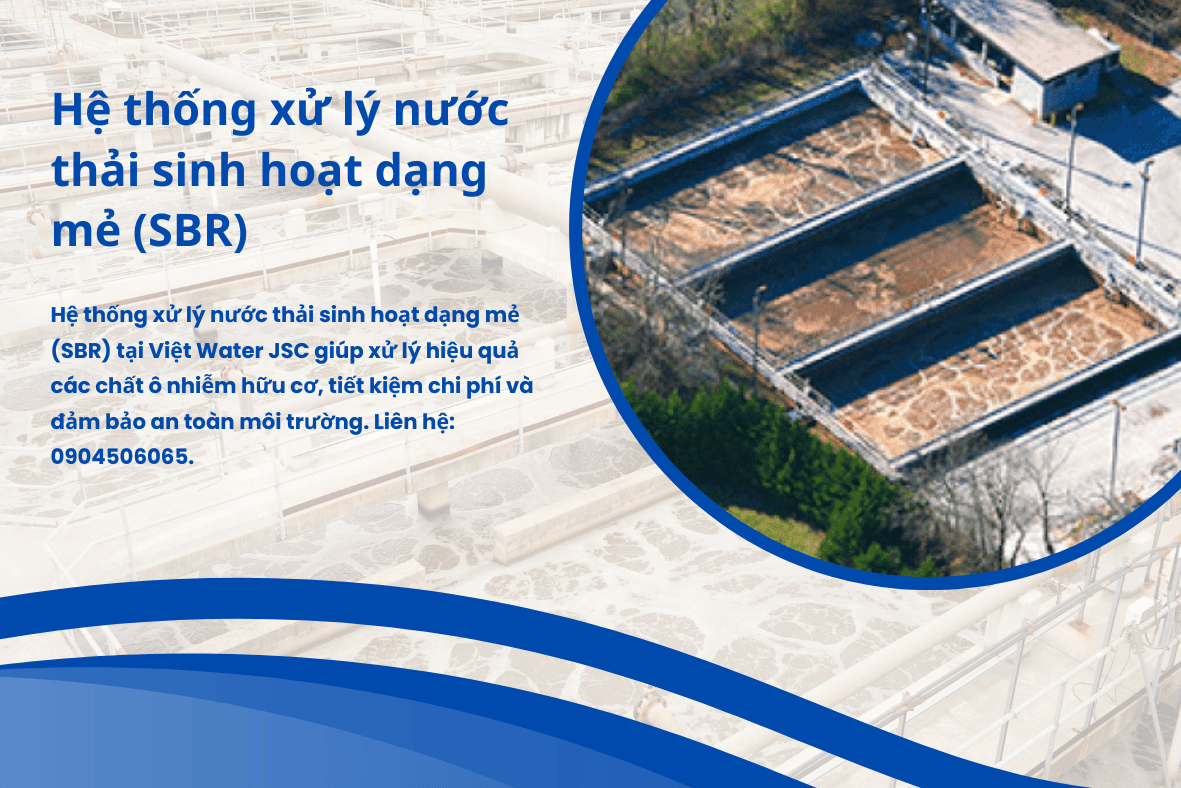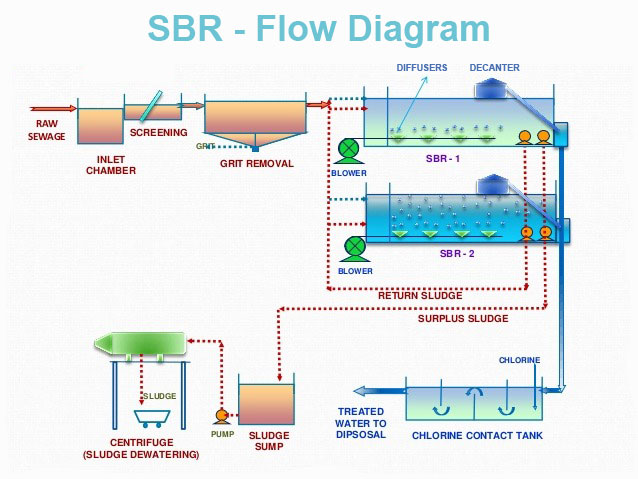Functional Food Production Wastewater Treatment
14 Nov, 2025VIET WATER provides complete wastewater treatment solutions for functional food manufacturing plants...
The treatment of domestic wastewater has become an urgent issue in large urban areas as the volume of wastewater continues to increase. In this context, the SBR wastewater treatment system for domestic use emerges as an optimal solution, providing effective treatment with advanced technology. The SBR system (Sequencing Batch Reactor) is a batch-type wastewater treatment system highly regarded for its flexibility and high treatment efficiency. Let's dive into the details of this system through the article below.

The SBR wastewater treatment system for domestic use is a batch-type wastewater treatment system that operates based on biological cycles in a reaction tank. The wastewater treatment process using SBR includes specific stages such as filling, aeration, settling, decanting, and idling. A unique feature of this system is that all processes occur in a single tank, saving space and reducing investment costs.
The SBR system is highly suitable for treating domestic wastewater from residential areas, hotels, and small industrial zones due to its flexible operation and ability to adjust parameters according to actual treatment needs.

The batch-type domestic wastewater treatment system (SBR) operates through five main stages:
In this stage, domestic wastewater is pumped into the SBR reaction tank. The wastewater contains organic substances and microorganisms that need to be treated. This stage may also include aeration to mix the wastewater, evenly distributing pollutants and creating favorable conditions for microorganisms to access and degrade organic matter.
This is the most crucial stage of the SBR system. The aeration process supplies oxygen to the tank, creating an environment for aerobic microorganisms to break down organic substances in the wastewater. Microorganisms use oxygen to convert organic matter into CO₂, water, and microbial biomass. This process helps eliminate most pollutants and reduces the BOD (Biochemical Oxygen Demand) level in the water.
After the aeration process ends, the system moves to the settling stage. During this stage, microorganisms and suspended solids settle at the bottom of the tank, forming a sludge layer. The upper water layer becomes clearer and can be separated from the system.
The decant stage occurs after the settling process is complete. The clear water from the top layer is decanted and discharged for further treatment or released if it meets environmental standards. The remaining sludge is retained in the tank for the next treatment cycle.
This is the final stage of one SBR treatment cycle. During this stage, the system rests and prepares for the next cycle. It also allows for adjustments to the system’s parameters, ensuring that microorganisms perform effectively in the subsequent cycles.
The SBR wastewater treatment system for domestic use offers several outstanding advantages, enhancing wastewater treatment efficiency and reducing investment costs.
With a cyclic operation process, the SBR system effectively removes pollutants like BOD, COD, and TSS. The prolonged aeration process ensures sufficient oxygen supply for aerobic microorganisms, which efficiently break down organic substances.
The SBR system uses a single tank for all treatment stages, minimizing the construction area. This is particularly suitable for urban areas with limited space.
With its batch design, the batch-type domestic wastewater treatment system can adjust the duration and operational parameters flexibly based on the inflow of wastewater. This optimizes the treatment process and adapts easily to changing operating conditions.
Compared to other wastewater treatment systems, the SBR system has lower initial investment and maintenance costs due to its simple design and fewer auxiliary equipment requirements.
Despite its many advantages, the SBR system has some limitations that need to be considered.
Since the system operates in cycles, controlling the time and operating parameters is crucial. Even a small malfunction in adjustment can affect the entire treatment process.
The SBR system has limitations in capacity expansion, as the batch process requires a long time for each cycle. This can be challenging when there is a sudden increase in wastewater flow.
In cases of sudden increases in wastewater flow or unusual changes in wastewater quality, microorganisms may become overloaded, leading to reduced treatment efficiency.
If you are looking for an effective and economical solution for domestic wastewater treatment, contact VIET WATER JOINT STOCK COMPANY today. We specialize in providing advanced wastewater treatment solutions, meeting the needs of households, small businesses, and large industrial zones.
With an experienced team of engineers and modern equipment, we are committed to providing our clients with optimal solutions, ensuring efficiency and environmental friendliness.
The SBR wastewater treatment system for domestic use is an ideal choice for treating wastewater in residential and urban areas, helping improve discharge water quality and protecting the living environment. With advantages in treatment efficiency, cost savings, and flexible operation, the SBR system is increasingly being applied widely in Vietnam. Contact us today for a consultation on the most suitable solution for your needs.